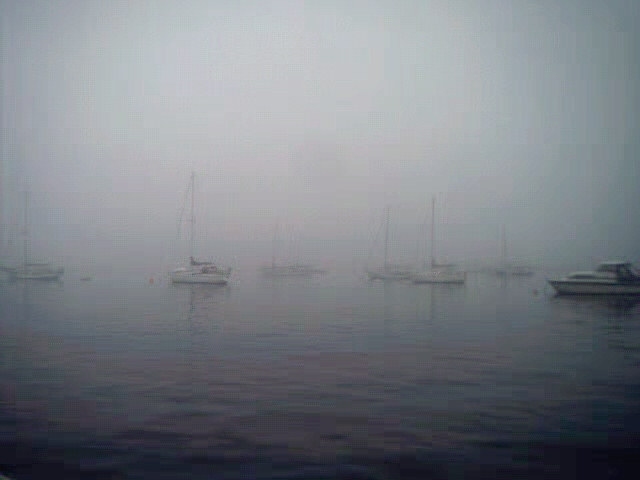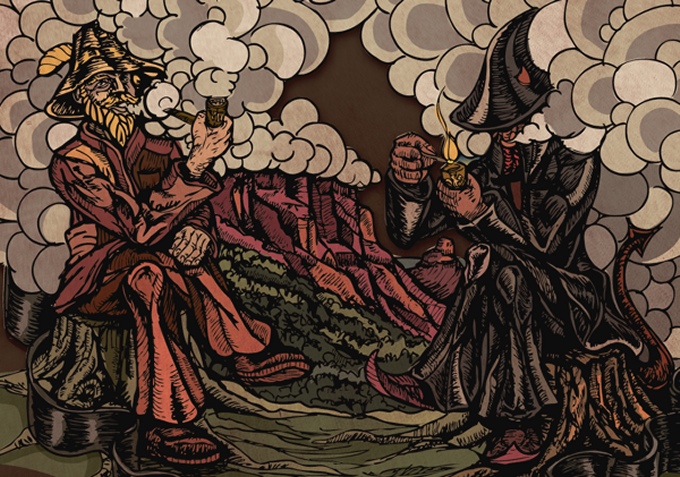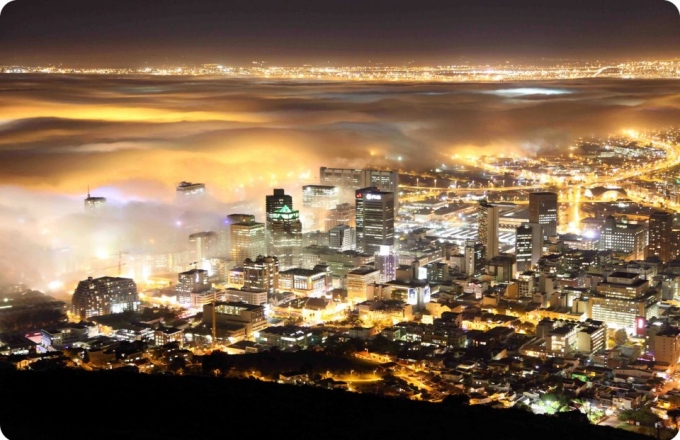Cape Town Fog
/Unlike Sandberg's dainty fog that “comes in on little cat feet”, Cape Town fog rushes in assertively on lion's paws, sometimes totally obliterating Table Mountain … and even the boats next to us. We've not experienced such dense fog as this since we were sailing in northern Maine and maritime Canada where the “pea soup” fog can become nearly claustrophobic. We've seen fog banks move toward us and have been totally enveloped in a matter of minutes and then clear just as quickly.

Here in Cape Town, the fog that rolls in off the Atlantic is sudden, heavy and wet. At night, we pop our heads out of the cockpit and it's totally silent, all sound seemingly gobbled up by the mist. We half expect Sam Spade to step out of a film noir flick with his London Fog collar flipped up and disappear down the dock. Lights are hazy and distorted, creating an eerie, other-worldly atmosphere.
The flat top of Table Mountain seems to attract heavy fog. Cape Towners call it the tablecloth. When a warm air mass meets the base of the mountain, it is forced upward by the rising topography and cools quickly. Moisture condenses and forms what is known as an orographic cloud, the heavy fog and mist we see. The fog swirls and billows as it climbs over the mountaintop, hence the term “tablecloth”.
In native African legend, Table Mountain is sacred and often seen as covered in clouds. It was known as “Mountain of the sea” to native people and “Veiled in clouds” to the Khoi and San people. One more modern legend has it that Captain Jan van Hunks, a Dutch pirate and sea captain settled here in the 1700s and frequently liked to smoke his pipe on the slopes of Table Mountain. One day when van Hunks went to his favorite smoking place, a man dressed in black was sitting in his spot. The two men subsequently entered into a smoking contest and so much smoke was emitted from the two, that the entire mountaintop was enveloped. The man in black was the devil and whenever the tablecloth is in place, Van Hunks and the devil are engaging in another smoking contest.
The tablecloth and fog do make for vivid photography at times. I ran across two photos that were absolutely superb and I wanted to share them with you. One is by Aneila Loubser entitled Fog in Cape Town.
Another is a photo taken by Brendon Wainwright, Table Mountain from Lions Head.
For more Cape Town fog pix, the Life of Mike blogsite is excellent.
























